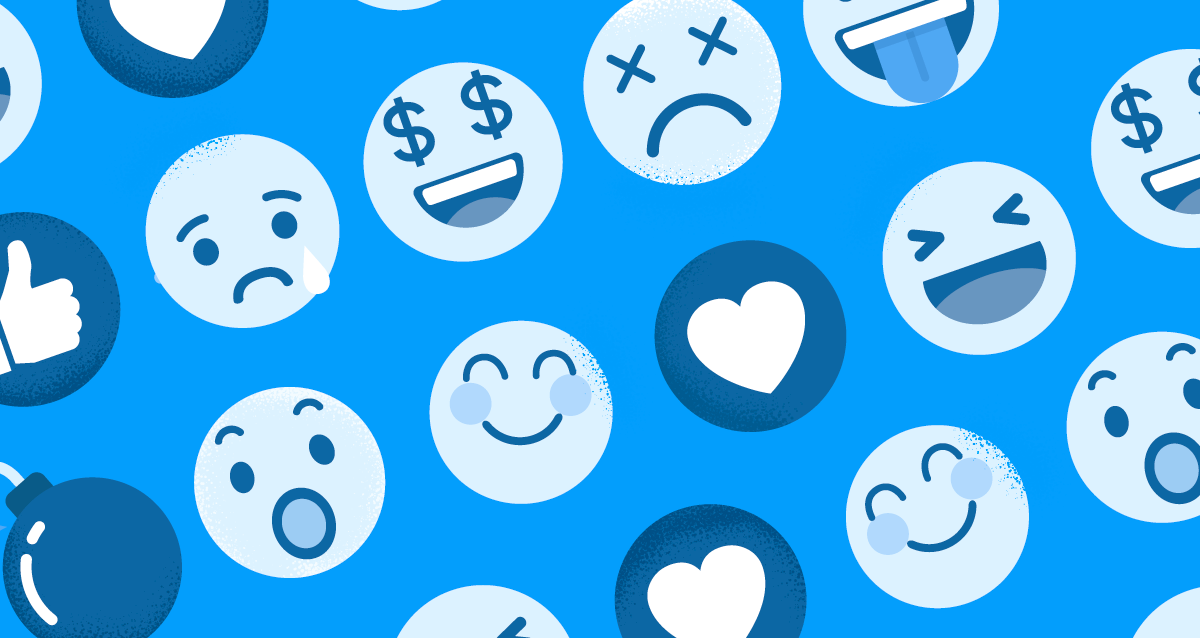
Within the ever-shifting world of social media, there’s one aspect that can forever confuse
those who won’t spend much time interacting with social platforms: emojis. Deciphering what’s meant by
But emojis are part of our world now, and whether you understand them or not, they’re here to stay. Once you get the hang of them, they’re actually incredibly beneficial in our increasingly text-based communications.
Simply put, emojis are an excellent way of conveying nonverbal sentiments that are harder (or just longer) to get across with text alone. And they get more and more specific each year as the Unicode Consortium—which is the official entity that decides what gets added to the emoji lexicon—continues to add to the offering of emojis.
For the most part, emojis are used far more in social media contexts and messaging apps than in e-mail, which tends to be viewed as more professional. So don’t worry that you need to start sending a smiley in every work request now (though you can see how emojis have helped DigitalMarketer’s email subject lines HERE).
For those moments when social media seems impossible to understand, we’ve written this handy guide-slash-dictionary on the emojis you’re most likely to encounter out in the wilds of the internet, so you can both understand others and use them freely without sounding tone deaf.
By far, the most-used emojis are faces and hand gestures, so that’s most of what you’ll find here, along with some choice selections of other widely-used emojis. It’s important to keep in mind that the meaning of a particular emoji (or string of them) is largely going to be dependent on its use and context.
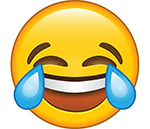
1. The laughing crying face indicates something is so funny that the writer is crying laughing. It’s also used to indicate someone is kidding or joking around. You can take the reaction up a notch with its cousin,  , which is tilted to the side and hence suggests that you’re laughing so hard you’re rolling on the ground. This one also has the distinction of being the most-used emoji on Facebook.
, which is tilted to the side and hence suggests that you’re laughing so hard you’re rolling on the ground. This one also has the distinction of being the most-used emoji on Facebook.

2. The heart-eyes emoji is the 2nd most-used on Facebook, and it conveys strong feelings of love or admiration. It’d be easy to read this one as romantic, but it’s not necessarily reserved strictly for those contexts. Rather, you’re likely to see it used as often as Americans say we “love” something, as in, “Want to get gelato after?” “ ”
”
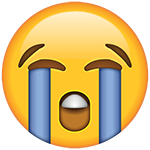
3. Unsurprisingly, the crying face (which looks more like it’s sobbing) generally says the writer is sad or disappointed, but it’s rarely used for actual tragedy, in which case an emoji could read as insensitive.
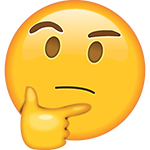
4. The face with a hand on its chin shows someone is thinking about an answer, but can also be used ironically to question someone else’s statement.
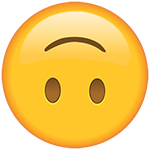
5. The upside down smiley is tougher to nail down, because it doesn’t have a consistently fixed meaning. It’s most often used to indicate that a person is joking or being sarcastic but can also indicate frustration or annoyance.
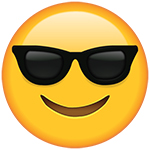
6. The sunglasses face emoji says “I’m cool as a cucumber,” but it’s also often used to stand in simply for the word, “cool.”
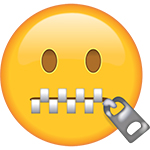
7. Remember the phrase “zip the lip”? Well, the zipper-mouthed emoji suggests the speaker’s lips are sealed. It’s saying, “don’t repeat this,” or “this news doesn’t go beyond me.”
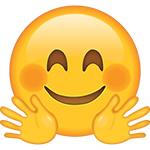
8. Inexplicably, the smiling emoji with hands facing forward signifies a hug. A hug with no arms, but a hug nonetheless.

9. Much like in real life, clapping hands signal a job well done, but the meaning of this emoji is heavily dependent on how it’s being used. This one has a double meaning, as it’s also often used as punctuation to make an emphatic point, as in: Clean  up
up the
the break
break room.
room.
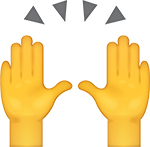
10. A pair of hands that look like they’re raising the roof are actually a high-ten, offering a way to say, “you did a great job.” This one also suggests congratulations.
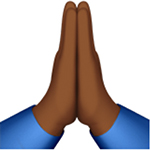
11. According to Unicode’s official meanings, this one is “hands folded in prayer.” It’s most often used in the United States to signal gratitude or thanks as well as the international symbol of “yeah, we hope” or “preach.”
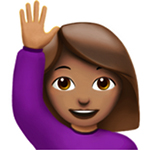
12. A person with their hand raised says, “I volunteer as tribute!” But if you’re not Katniss, it’s most often used as an admission that you, too, do a certain thing. Somewhat hilariously, this symbol was actually created to signal a help desk person, leading one to one wonder: when was the last time you needed to illustrate a help desk person in a digital conversation?

13. Typically this means, “read below” or simply, “this,” and is a way of signing off on something (usually a link someone is posting) or suggesting agreement. Not to be confused with its upward-pointing counterpart, primarily used within the US to mean “read above.”
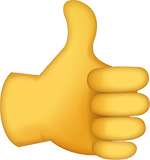
14. The thumbs up sign says, “okay, got it,” when in response to new details, information, and/or a request. Be careful when using this one in response to other communication, though, as it can sound dismissive in the wrong context. Imagine sending “I’m so excited to see you!” to a friend only to receive  in response.
in response.
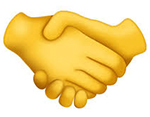
15. The emoji for shaking hands signifies agreement, as if to say, “It’s a deal!”
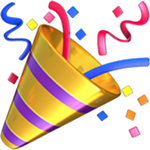
16. The confetti popper offers congratulations and celebration.
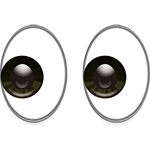
17. Eyes looking askance indicate the speaker is watching something, but the feeling accompanying it is interchangeable. Depending on the context, this one can mean watching in horror or amusement but can also say, “I see that,” or even suggest the writer likes something you just sent them.
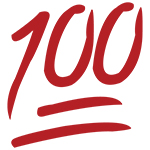
18. Much like a handwritten note from your teacher on a graded assignment, the handwritten one hundred score means that someone or something did an excellent job, scoring the highest marks.
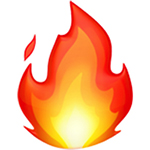
19. Not only signifies literal fire, but it also states something is hot, hot, hot, as in “This Beyoncé track is .”
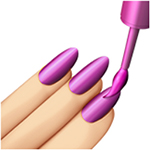
20. Painting your nails is most often used in the context of suggesting calm, as in, “I’m so relaxed over here, I’m painting my nails.”

21. Two glasses clinking in a toast can signify congratulations, as well as celebration of a job well done or victory within a team.

22. The checkmark is generally used in the context of “yes, this is done,” i.e. it’s been checked off the list.
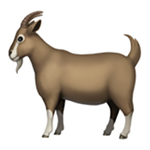
23. The emoji of a goat is rarely used to signify the actual animal, but rather stands in for the acronym GOAT, which stands for Greatest Of All Time.
I hope these definitions have shed some 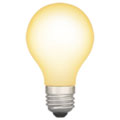 on emojis. Now go forth and make your friends and family
on emojis. Now go forth and make your friends and family  with them.
with them.
https://www.digitalmarketer.com/blog/guide-to-emojis/?utm_source=house-list-email-broadcast&utm_medium=email&utm_term=house-list&utm_content=dmblog-07-10-19&utm_campaign=Blog%20Post%20Featured%20Email




Комментариев нет:
Отправить комментарий